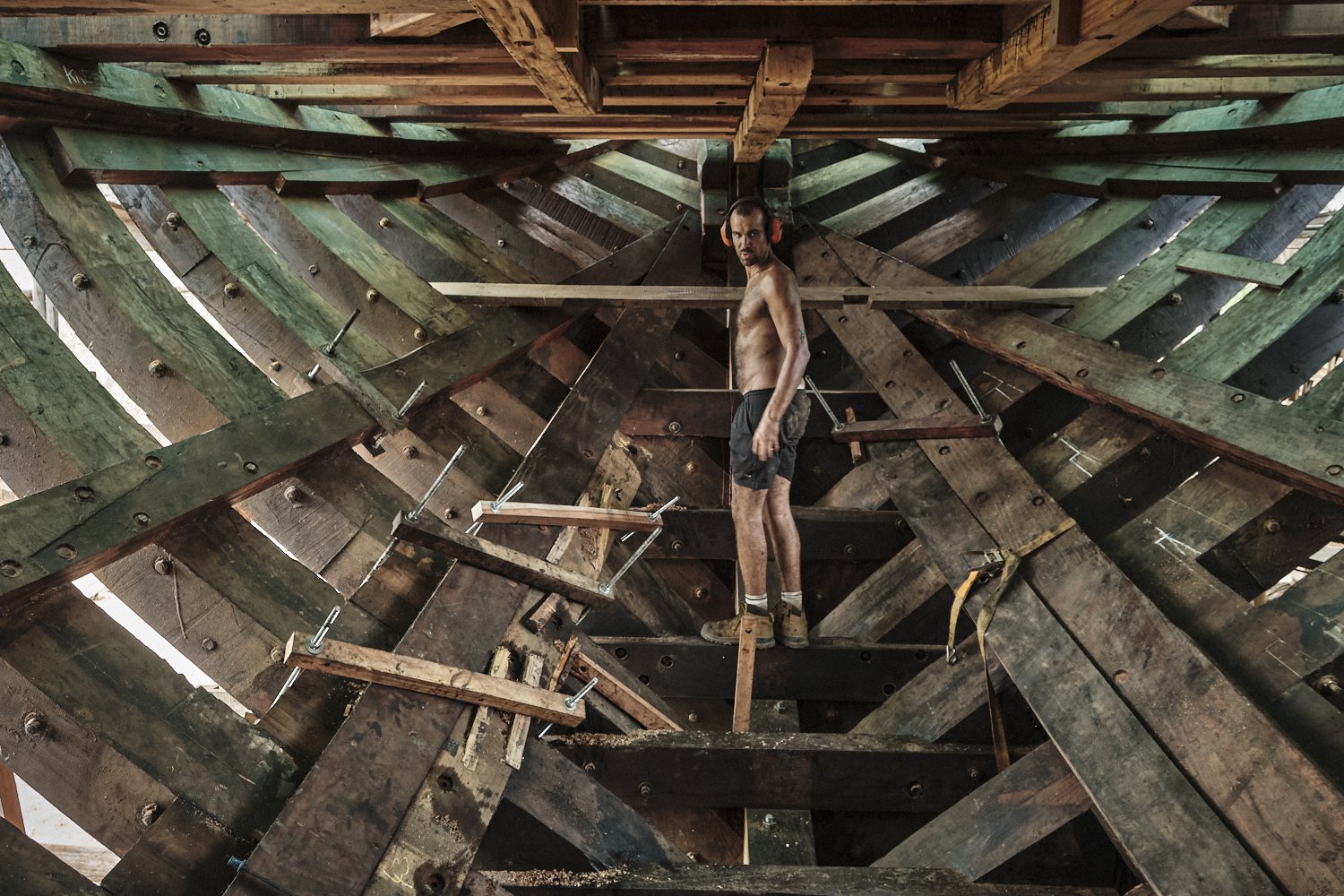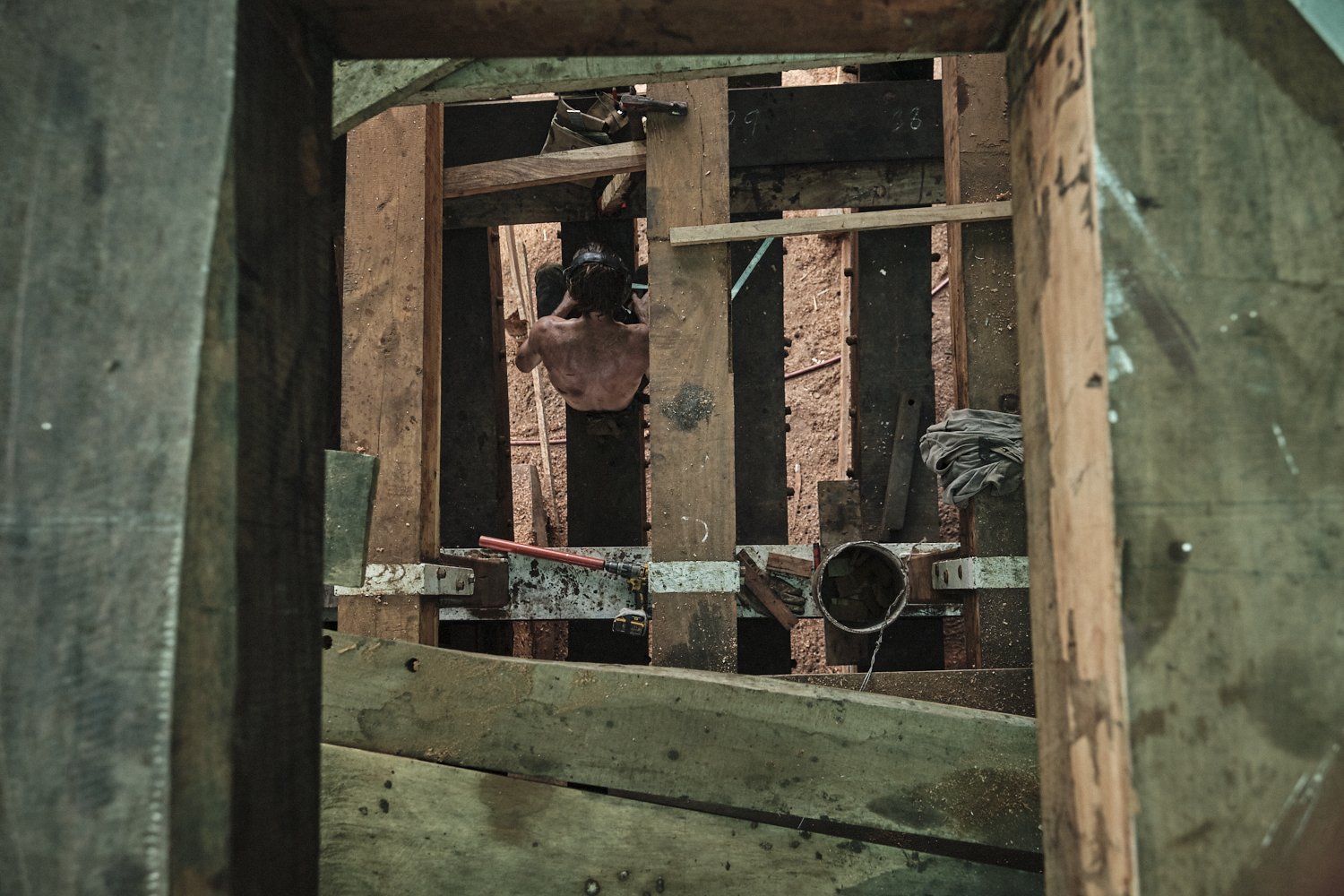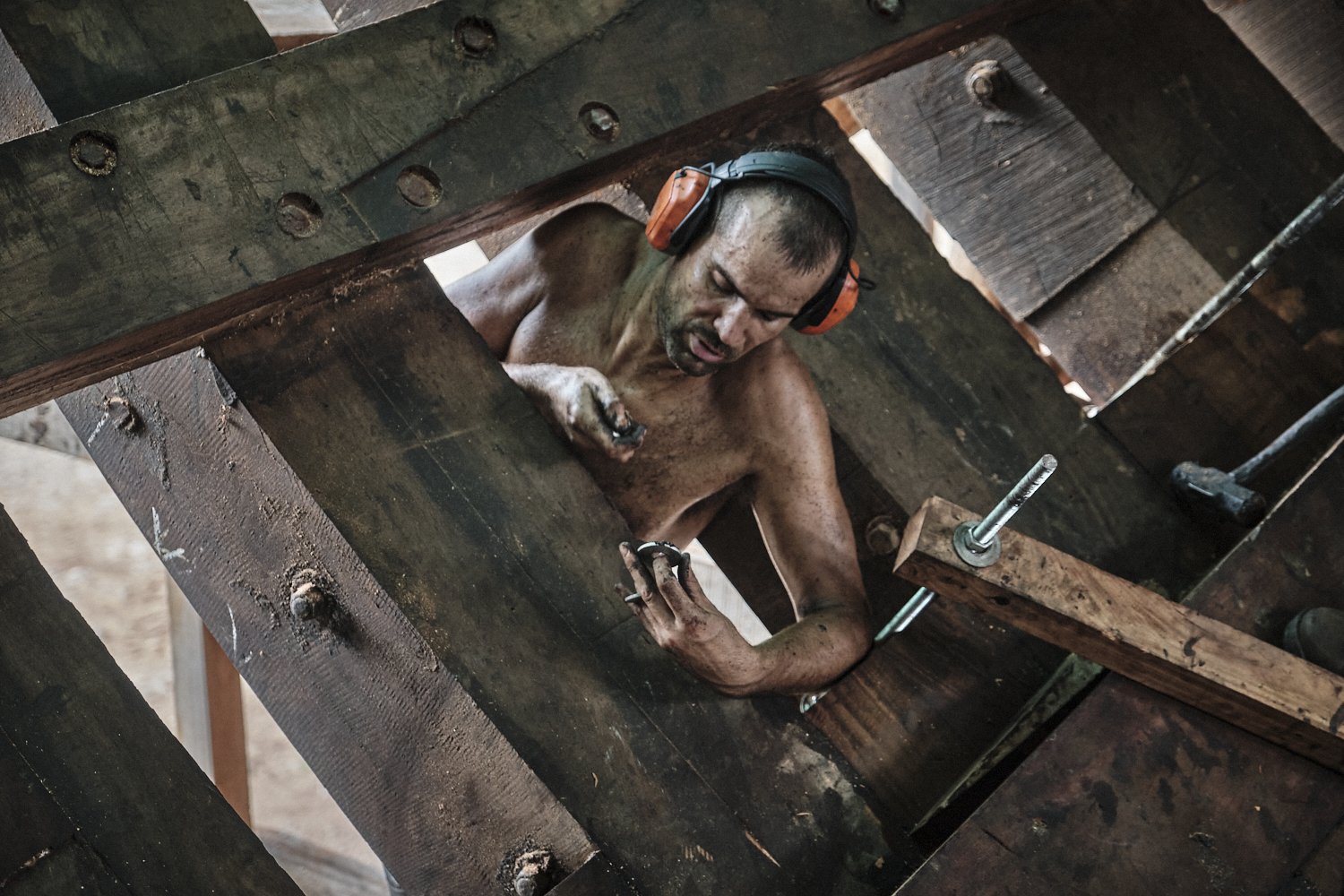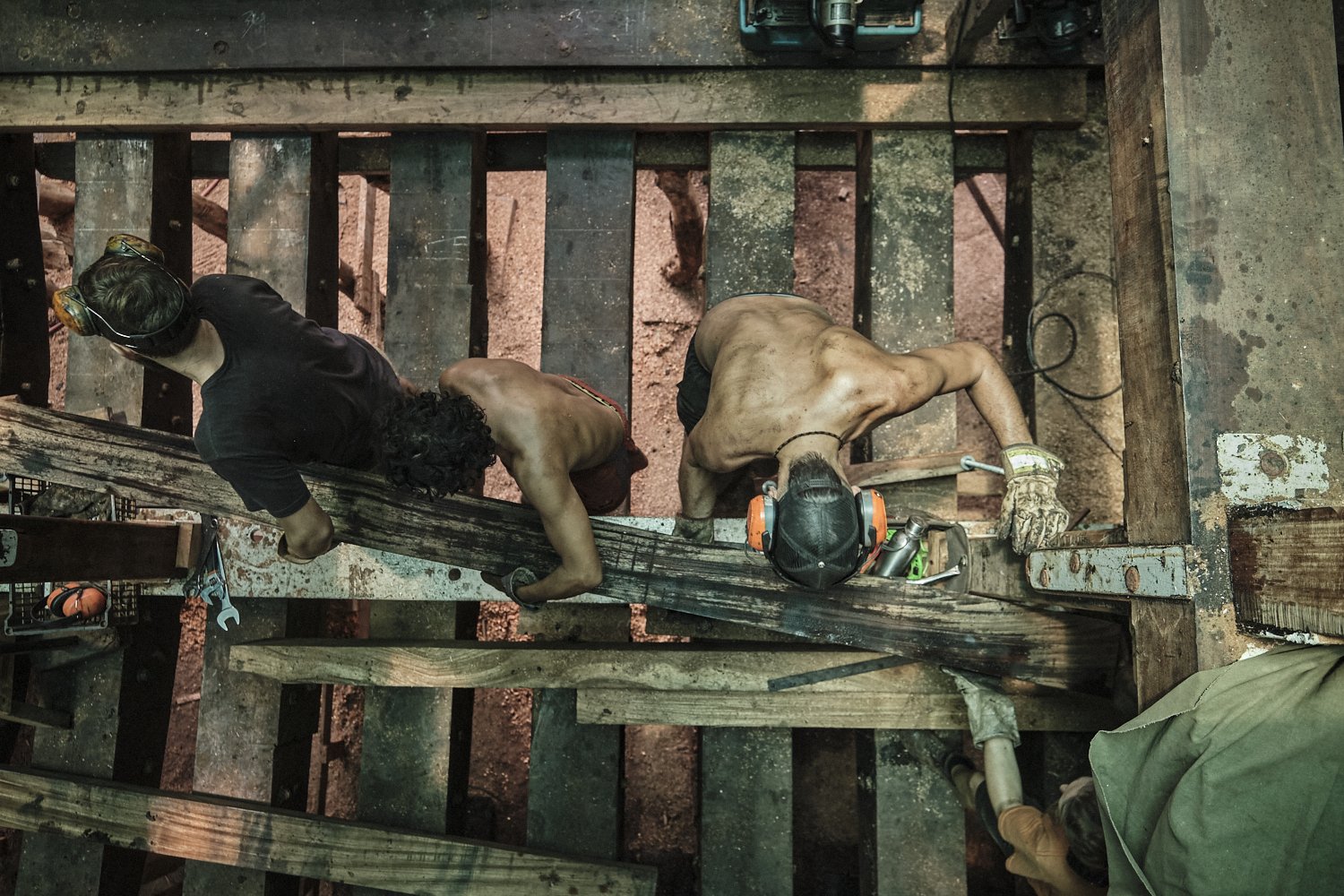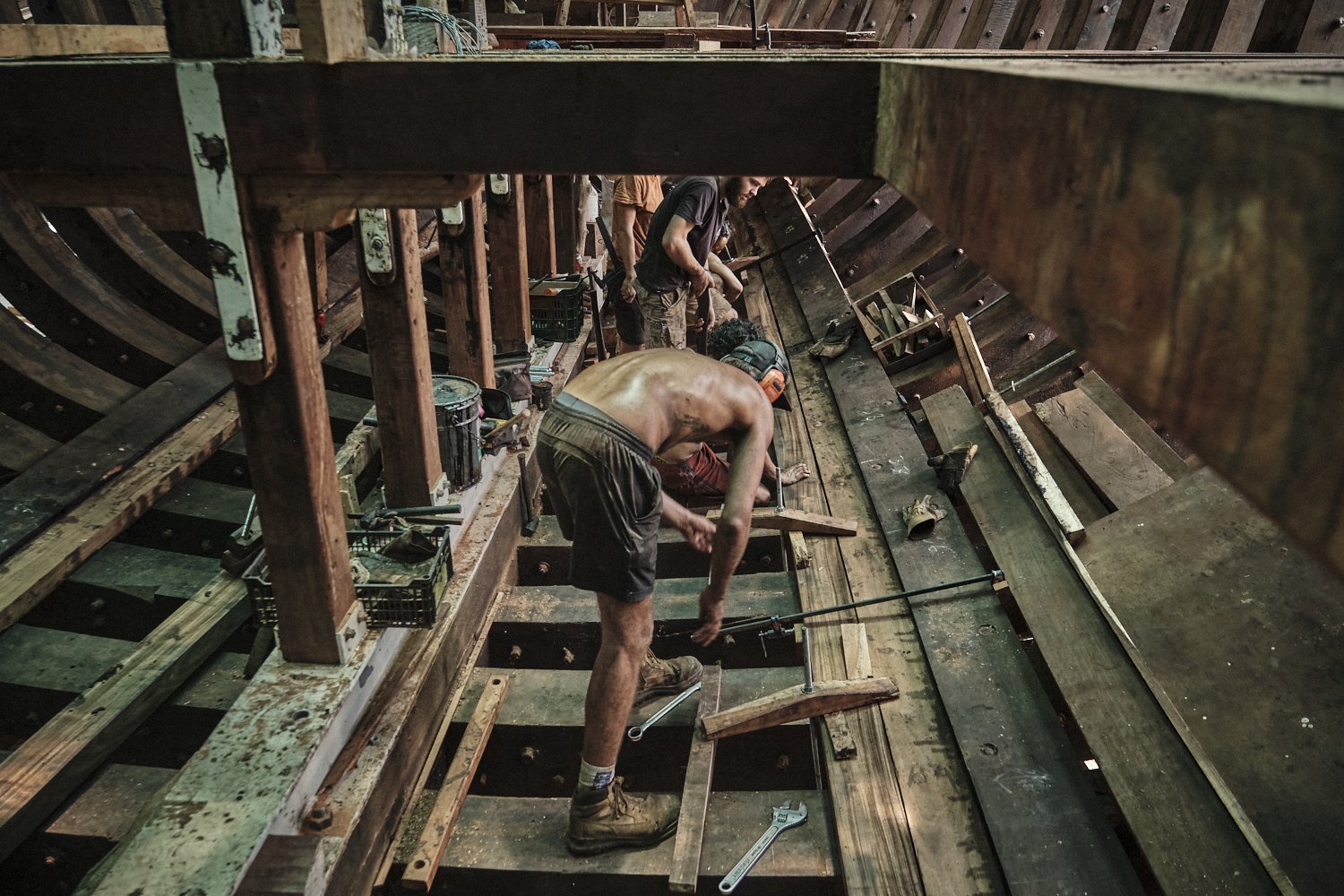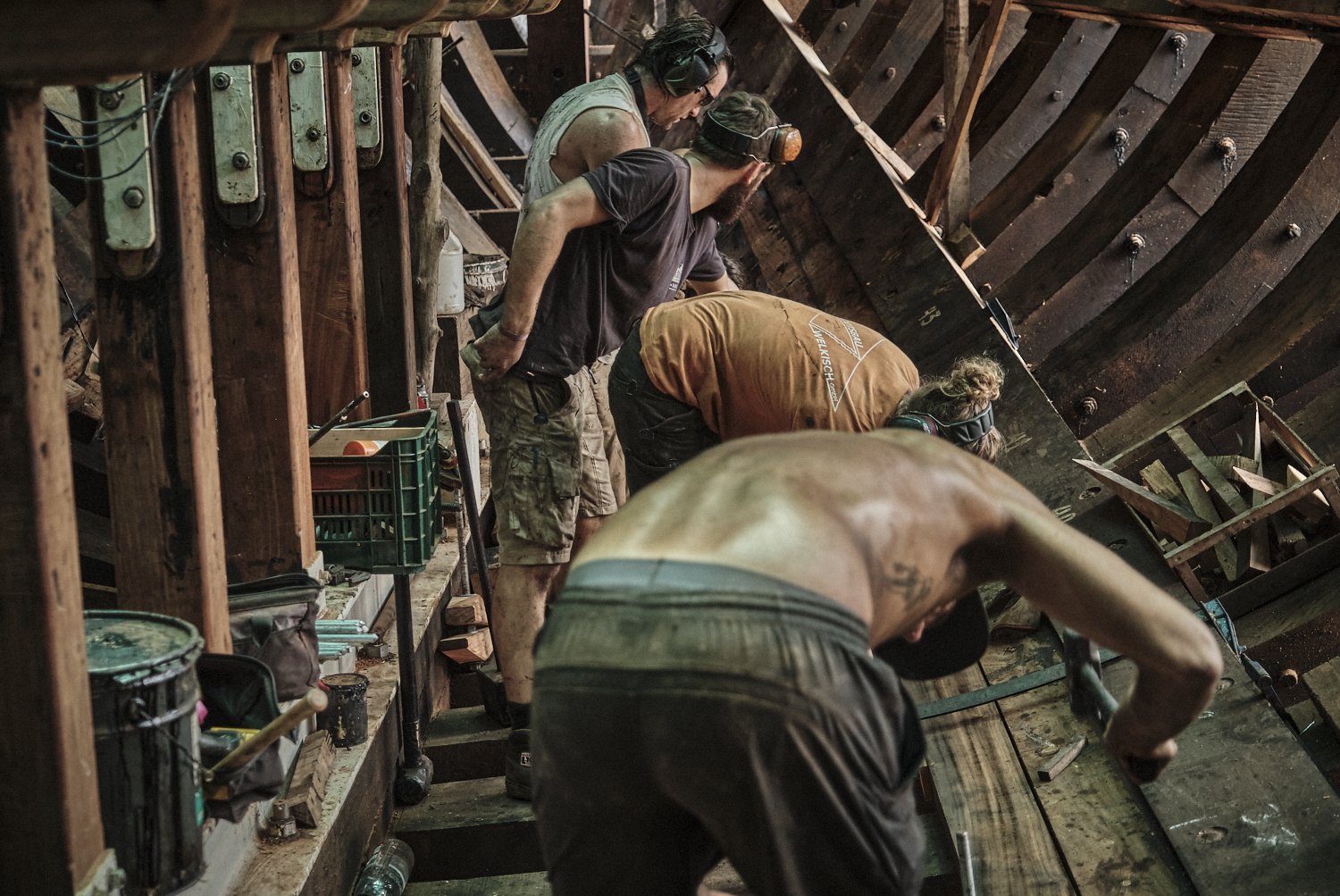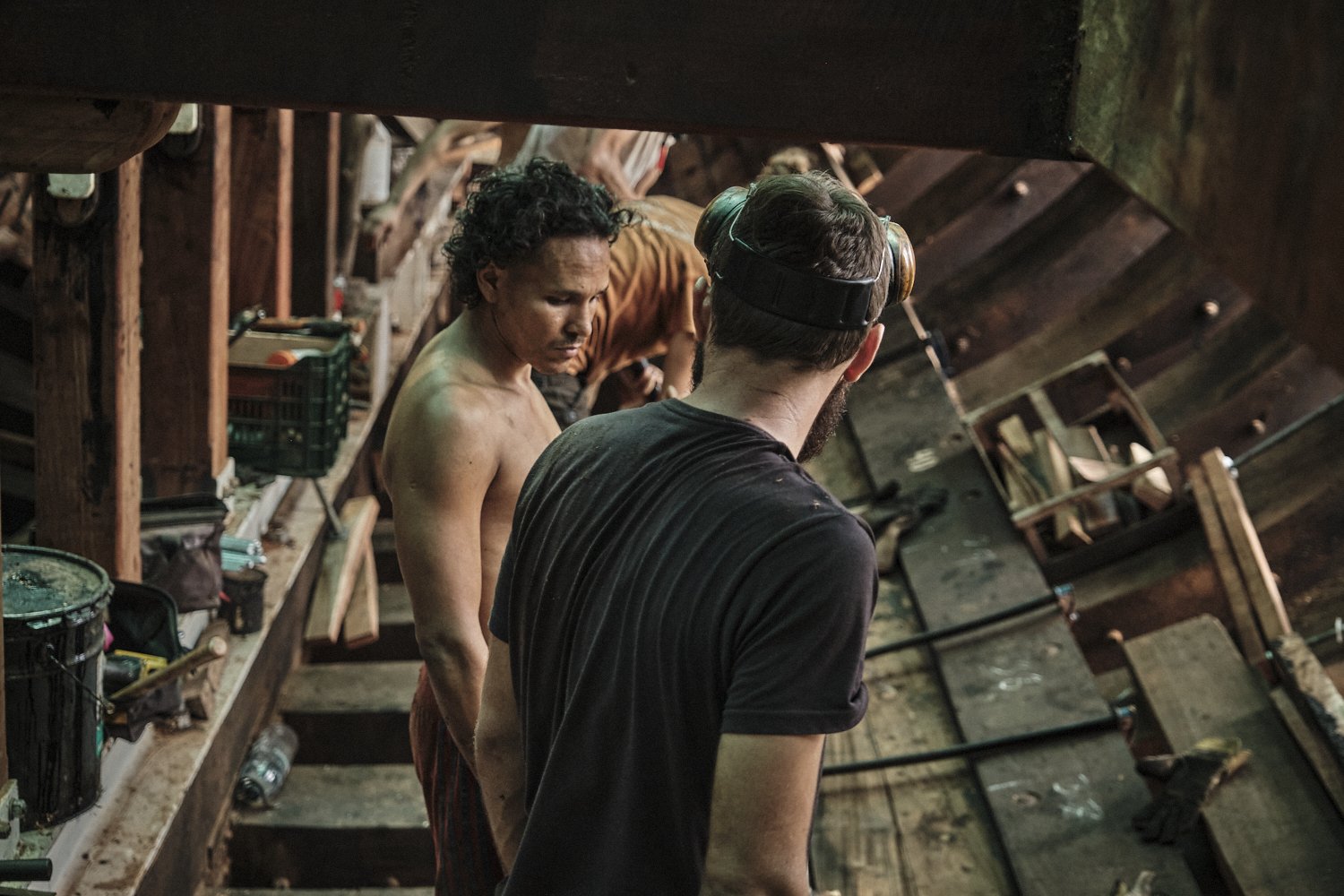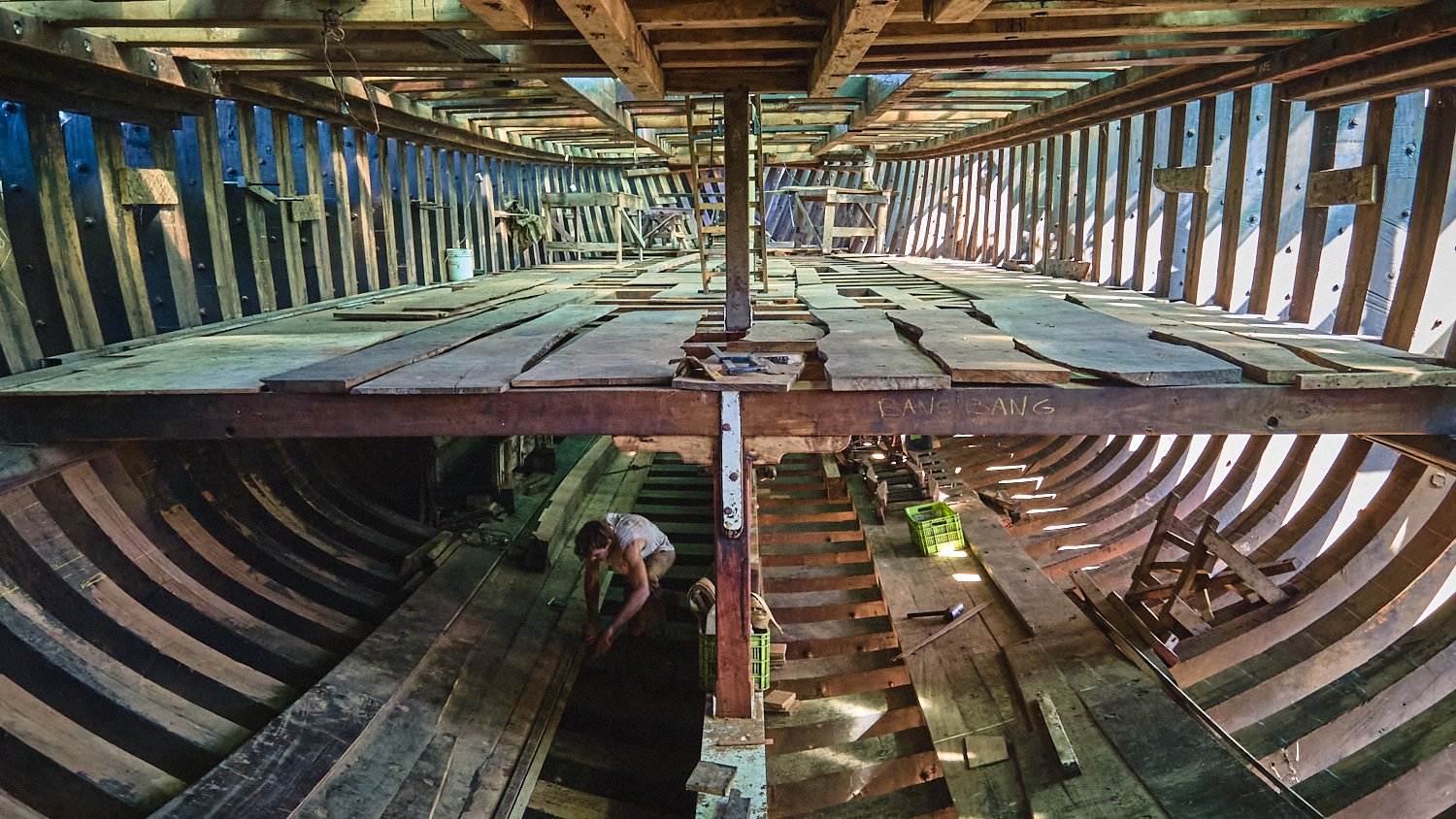Interior Planking
Shipwright and team leader Janek Lindemann
Janek has been working at the shipyard since October 2021. He’s been involved with the poop deck beams, installing the transom, organizing planking and more. He’s an invaluable member of the team who brings a high work ethic and has an immense passion for boat building.
Janek sat down with Media Manager Jeremy Starn to talk about the interior planking and what that process is like.
What is your background in boat building?
I did an apprenticeship in Germany for 5 years and finished in 2019. In Germany we have 1 or 2 boat building schools where everyone has to go. Every year you go to school for 4 months and then the rest of the time you spend working for a company. I worked during my apprenticeship. Then I worked two more years there. And now I've been at the shipyard for about 8 months.
What are you working on now?
At the moment I'm doing interior planking. The first step is to do the layout on the frames, so everything is drawn out already. Then we make a template, we use a long baton, the same length as the plank. We put the template against the frames where the plank will go and make the marks where it needs to be cut. We then transfer that to the real plank and make the cuts. Because its inside the ship the bottom of the plank is larger than the top, the opposite of the outside.
Right now we are steaming the planks in the bow. We only steam the forward planks and maybe a little in the back. Maybe only a quarter of the planks are steamed. The rest of the planks can go in without steaming.
How do you fasten them?
At the moment we use metal spikes and trunnels with wedges. We try to use as little steel in the ship as possible. On a 6 meter plank we use around 6-7 spikes and about 8 trunnels. We also use edge fasteners every third frame. These edge fasteners are a 19” spike without a head that goes through 2 planks which connects the planks to themselves.
It can be a challenge to join the frames. The planks are butt jointed on the frames. There's a rule that you have to skip frames. So for the first plank you have to jump three frames before putting a joint on the next plank. This way they are staggered. This is a pretty important part of the whole construction and also makes it a bit more complicated because you can't join multiple planks on the same frame unless they are 3 planks away.
Can you tell me more about the planks themselves?
The planks are made of Spanish Cedar and Cenizero. In the middle of the ship the widest planks are 8 inches wide and 4 inches thick. The longest planks are 8-9 meters. But that changes between 8.5-4.5 meters depending on if it’s in the front or back.
What's different about this planking then what you've done before?
What I did in my previous job was much smaller than this. The planking for Ceiba requires a lot more people. You have a lot of surface to plane the bevels on and definitely a lot more work. We don't caulk the inside, only the outside.
What is the purpose of interior planking?
It has a structural purpose, to prevent sagging. To make the whole boat more complete. The interior planking is more or less the whole hull inside. The most important of the ceiling is in the middle of the ship. In the back and front it does not go completely to the stern and sampson posts.
How much longer do you anticipate for the planking?
I would say our team working on this can work for another 6 months on the interior planking. We started but its going faster now. Soon we can also start planking between the tween and top deck.
What do you find interesting about the planking?
Normally I really like getting into a nice process. And to get something done. Everyone has to work together. That's nice. It's great working with 5 or 6 people working together. Steaming is exciting but after the 6th plank it also starts to become normal.
What keeps it interesting for this repetitive work?
It's a big boat so its a lot of the same work. Also to switch a bit around. Which is good and bad. When you teach someone to plank you want them to stay but after the 6th plank it gets annoying so its nice to move around to different things. It's just finding a balance of this.
This interview was edited for length and clarity.
Interview conducted and edited by Jeremy Starn








